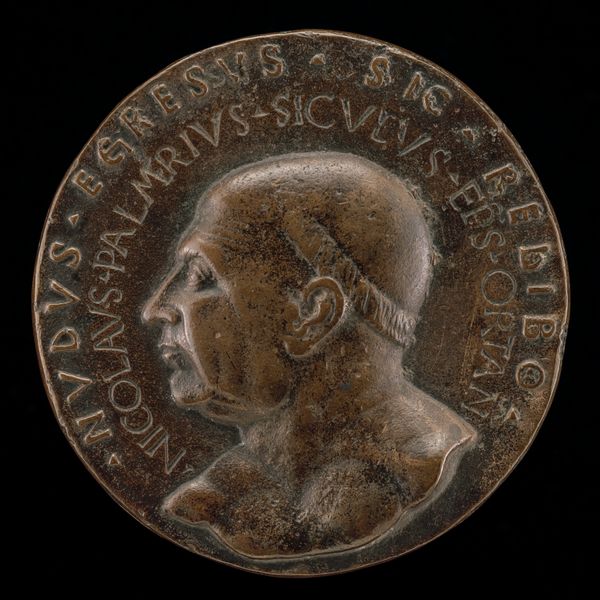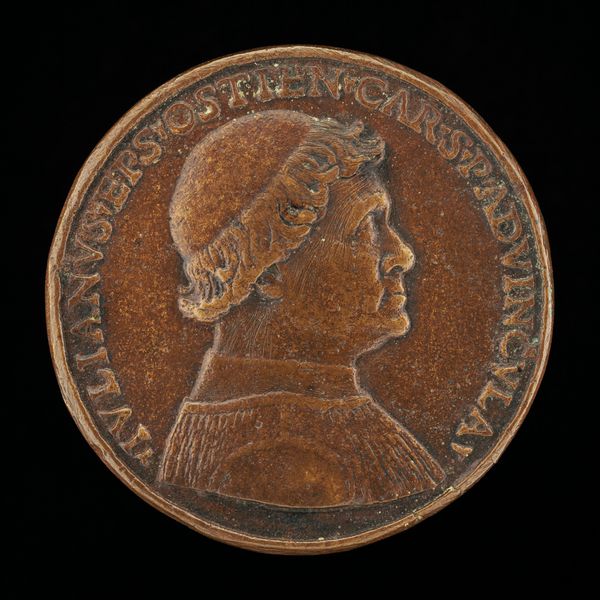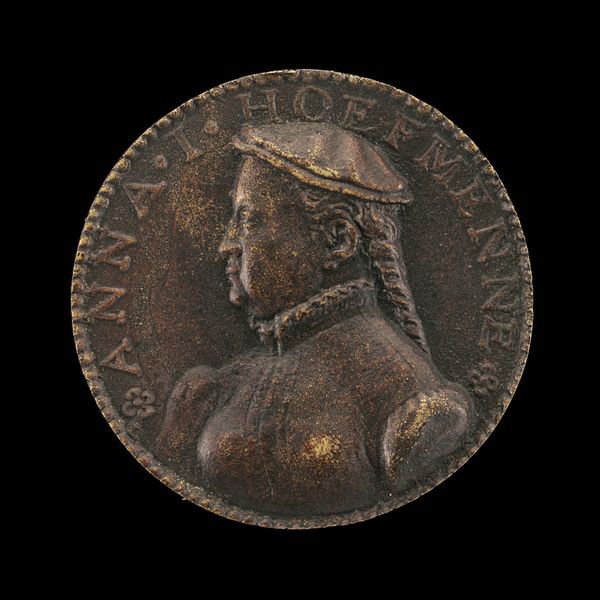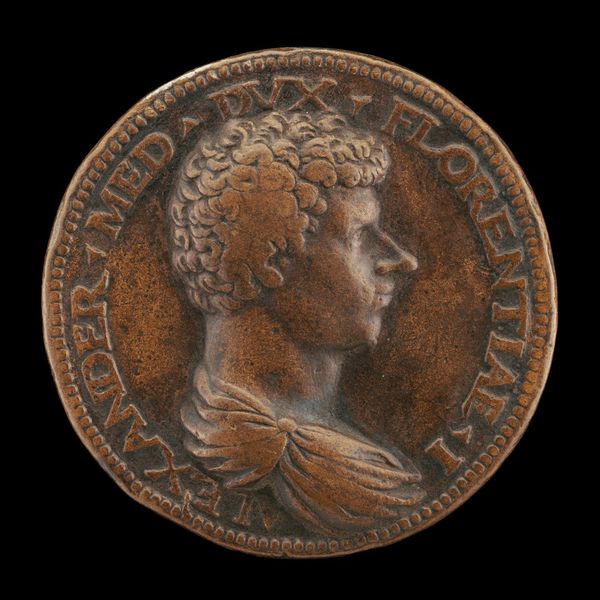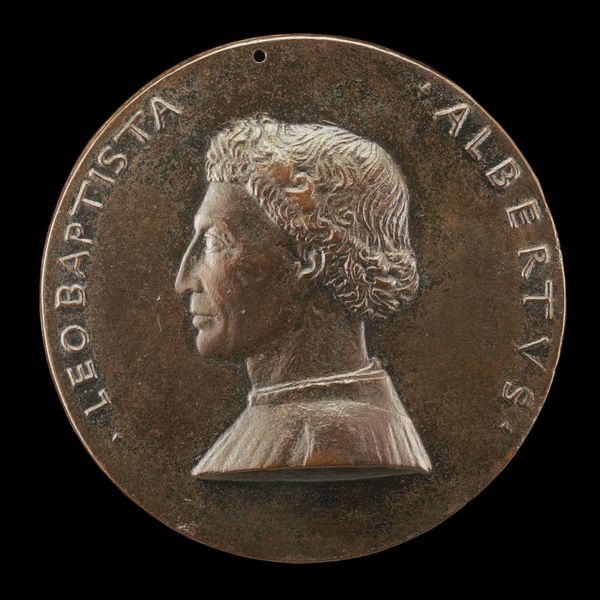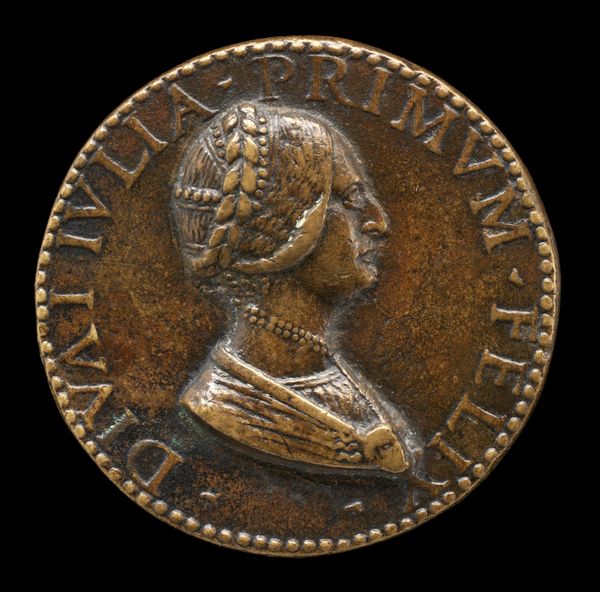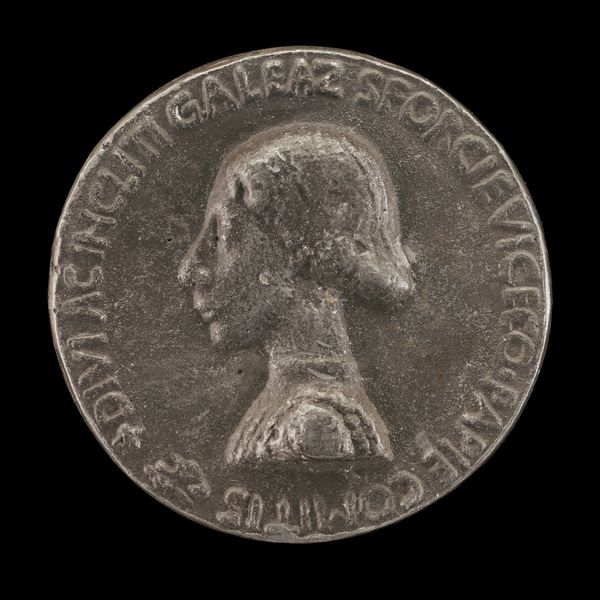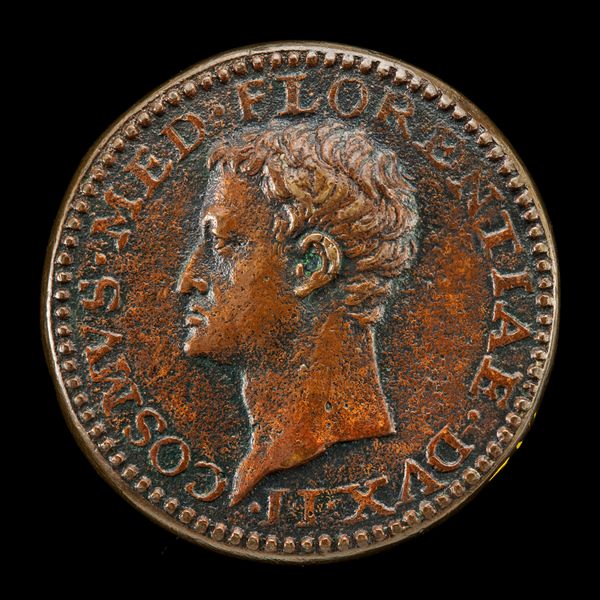![Francesco Foscari, c. 1374-1457, Doge of Venice 1423 [obverse] by Antonio Gambello](/_next/image?url=https%3A%2F%2Fd2w8kbdekdi1gv.cloudfront.net%2FeyJidWNrZXQiOiAiYXJ0ZXJhLWltYWdlcy1idWNrZXQiLCAia2V5IjogImFydHdvcmtzL2M3OGNkODZjLTYwZDgtNDQwMy04OTJkLTFiNzgxMjdmMmQzMy9jNzhjZDg2Yy02MGQ4LTQ0MDMtODkyZC0xYjc4MTI3ZjJkMzNfZnVsbC5qcGciLCAiZWRpdHMiOiB7InJlc2l6ZSI6IHsid2lkdGgiOiAxOTIwLCAiaGVpZ2h0IjogMTkyMCwgImZpdCI6ICJpbnNpZGUifX19&w=3840&q=75)
Francesco Foscari, c. 1374-1457, Doge of Venice 1423 [obverse] c. 1457
0:00
0:00
bronze, sculpture
#
portrait
#
medal
#
sculpture
#
bronze
#
sculpture
#
italian-renaissance
Dimensions: overall (diameter): 4.71 cm (1 7/8 in.) gross weight: 3.957 gr (0.009 lb.) axis: 12:00
Copyright: National Gallery of Art: CC0 1.0
Curator: Here we have a bronze medal dating back to around 1457, created in the Italian Renaissance style by Antonio Gambello, featuring a profile portrait of Francesco Foscari, who was the Doge of Venice from 1423. Editor: My immediate thought is solemn. The low relief combined with the patina of the bronze gives a profound sense of gravity and timelessness to the Doge's image. Curator: It is fascinating to consider the social implications of creating portraits in medal form during this period. These weren’t large-scale public monuments but smaller objects, made accessible to a certain class—powerful elites reflecting on status and legacy. How do you see it reflecting, or shaping, political messaging at the time? Editor: Medals like this played a critical role in shaping the public image and consolidating power for the elites and figures they represent. It allowed rulers to control how they were seen and remembered, similar to today's political advertisements. Curator: I'm drawn to the detail that went into the making of this medal. The artist must have employed a very skillful method of casting bronze for it. The sharpness of the inscribed letters, consider that labor against the preciousness of bronze, and the time invested. The texture achieved adds to its tactile quality; its material presence makes it even more compelling. Editor: Absolutely, these weren't mass produced trinkets. It says something about Foscari’s ambitions as Doge that he used artistic productions to project an air of classical dignity and the enduring power of Venice. Curator: The circulation of medals like these really speaks to the rise of powerful figures needing self-validation in visual and material form during the renaissance. Looking closely allows us a small peak into understanding complex and power-fueled societies of the past. Editor: Indeed, looking at it in this light shows how art can become a tangible reminder of socio-political intentions from centuries ago, offering unique insights into powerful cultural moments and personalities.
Comments
No comments
Be the first to comment and join the conversation on the ultimate creative platform.


